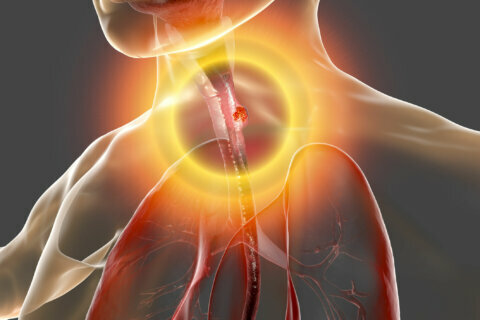
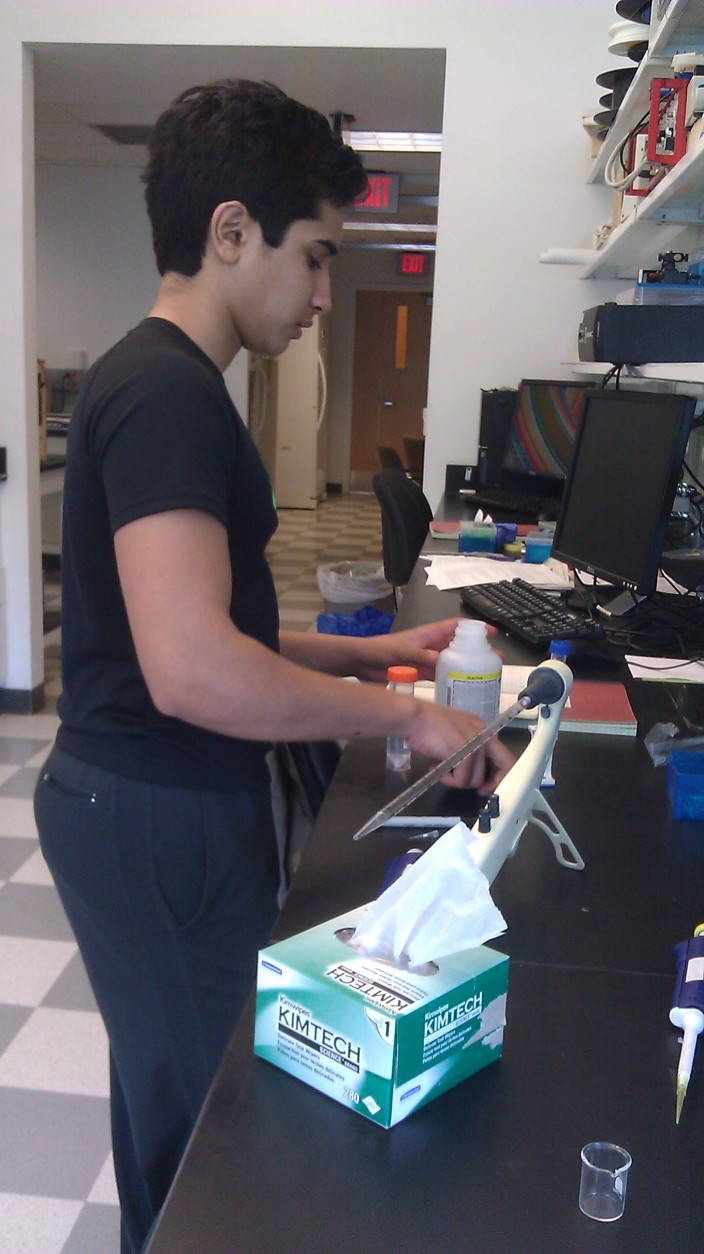
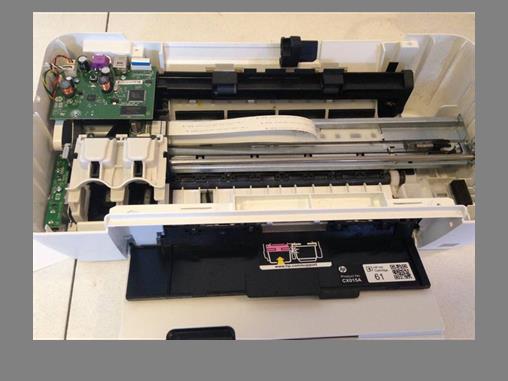

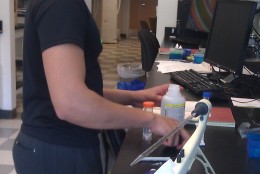
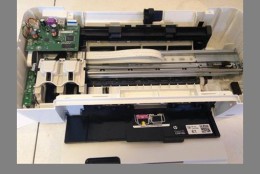
WASHINGTON — A local teen has come up with a home test for cardiac disease — an innovation that has already earned him a finalist’s berth in the global Google Science Fair.
Adriel Sumathipala, 16, of Ashburn, Virginia, spent two years in the lab developing a way to use a home inkjet printer to create test strips that can check for total cholesterol and oxidized LDL — two indicators of heart health in the blood.
“It is ultra-low cost, it is rapid and it is portable,” says Sumathipala, adding that his project could “really change the way we treat this disease.”
Patients would be able to keep watch on these biomarkers at home using a drop of blood on a test strip, much like a diabetic uses a glucose monitor. The idea is to give them easy, instant feedback on their condition.
Key to all this is the inkjet printer, which Sumathipala took apart and reassembled to hold a special cartridge. He then wrote software for the printer, enabling it to use the cartridge, which contains enzymes and other chemicals instead of ink.
Sumathipala says he was inspired in his research by his family, which has seen its share of heart disease. Many of his relatives have high cholesterol; one grandfather has had heart bypass surgery, and the other died of cardiac disease decades ago.
And even at his young age, he is fed up with the way we currently test for heart disease. “It’s expensive; it takes a long time, and these are tests only lab professionals can do,” he says. “I knew we could do better than that.”
Fittingly, this talented teen was in a lab at the University of Maryland when he got the word that he was chosen as one of the 20 finalists in the Google Science Fair.
It’s an online competition open to students ages 13 to 18 from around the world, and this year there were thousands of entries from more than 90 countries.
“I do believe some of the projects there really do have the capacity to change the world,” says Sumathipala, who hopes for a career someday that marries economics and entrepreneurship with science.
For now, he is focusing on one key date: Sept. 21, when the final round of judging for the 2015 Science Fair will be held at Google’s headquarters in Mountain View, California.



